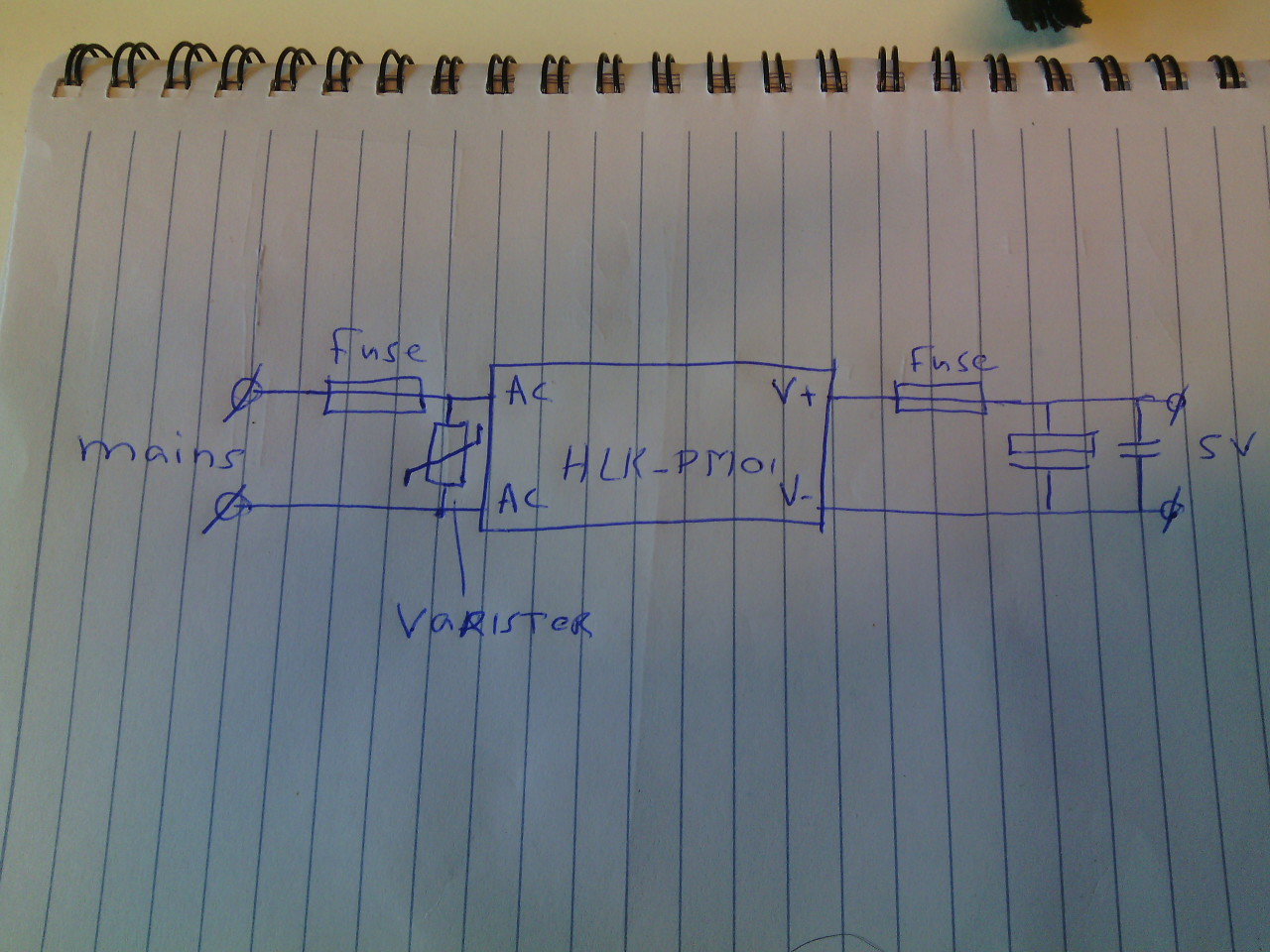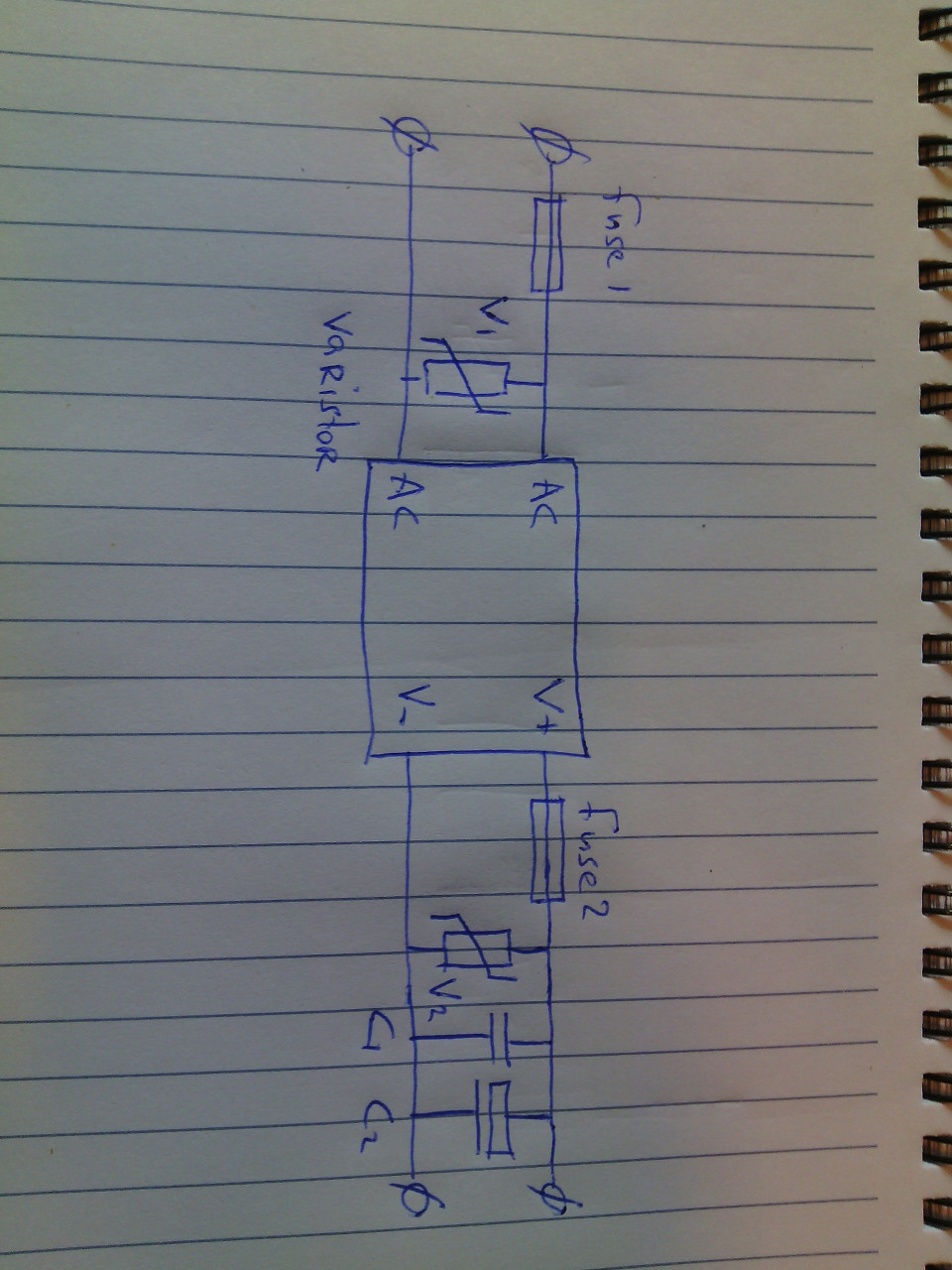Safe In-Wall AC to DC Transformers??
-
@Bertb The idea was to put it on my desk (with a mains cord soldered to it) running a resistor load, and then shoot some thermal pics of it
. I wasn't planning to touch the unit with my bare hands while it is powered hahaha -
@ThinkPad Well its your desk, so its fine with me.
Is there a way to get your address without shouting it from the rooftops? -
Don't suppose anyone could tell me what components (values) need to be purchased for 230v (UK)? I have bought 10 of these and wish to make them as safe as I can.
-
@Bertb Once again, thank you for all your work with this! I can't wait to start building with this! This will be so helpful to have a safer method instead of just dismantling old phone chargers and rolling the dice.
I couldn't open the schematic. What is the file extension? Also, would you mind posting the required parts for 110v if they are any different than what you will be providing @Atomfire?
Thanks!
Pete
-
Hey guys, I wrote to the owner of the site suggested by @Moshe-Livne. He replied saying that he can test the HLK.
He mentioned that usually he takes at least two units (so if one burn he can continue the testing). I will send one from my lot, perhaps we have a brave guy to gave up one more? (a sacrifice of few to save many ) ;-) Let me know and I will share the address via PM (Denmark).
-
Hey guys, I wrote to the owner of the site suggested by @Moshe-Livne. He replied saying that he can test the HLK.
He mentioned that usually he takes at least two units (so if one burn he can continue the testing). I will send one from my lot, perhaps we have a brave guy to gave up one more? (a sacrifice of few to save many ) ;-) Let me know and I will share the address via PM (Denmark).
@rvendrame Considering cost of postage and logistics involved it would probably be cheapest to just order two units from Ali to him? its 8$ including shipping if i remember correctly
-
@Bertb Once again, thank you for all your work with this! I can't wait to start building with this! This will be so helpful to have a safer method instead of just dismantling old phone chargers and rolling the dice.
I couldn't open the schematic. What is the file extension? Also, would you mind posting the required parts for 110v if they are any different than what you will be providing @Atomfire?
Thanks!
Pete
-
@Bertb I tried adding "html" suffix to it but it didn't work.
-
One option is to click on the link and download the file. After the file is completely downloaded, just add the extention .jpg to it.
The result is as following:

-
Something went wrong with uploading the file, I think.
Herewith a new schematic with a suggested bill of material.
It is highly experimental still, but I ordered the components yesterday.I am specially interested in working with the PTC fuse.
I hope the proposed circuit works for you. Please keep the maximim continuous output power in mind. It is only 3 Watts (600 mA).
In some cases you might need to add C1's (rule of thump 1 per chip or chip VCC) and/or need to increase the value of C2. This depends on the fluctuations in the power demand.With the proposed values for C1 and C2, the ripple remained below 50 mV at 500 mA.
Also keep in mind that a remaining oscillation frequency residue appears in the output of some 60kHz.. If capacitors are not able to filter that out, a small coil might be needed.Well it is experimenting that makes this fun, isn't it?

-
Hey guys, I wrote to the owner of the site suggested by @Moshe-Livne. He replied saying that he can test the HLK.
He mentioned that usually he takes at least two units (so if one burn he can continue the testing). I will send one from my lot, perhaps we have a brave guy to gave up one more? (a sacrifice of few to save many ) ;-) Let me know and I will share the address via PM (Denmark).
@rvendrame said:
Hey guys, I wrote to the owner of the site suggested by @Moshe-Livne. He replied saying that he can test the HLK.
He mentioned that usually he takes at least two units (so if one burn he can continue the testing). I will send one from my lot, perhaps we have a brave guy to gave up one more? (a sacrifice of few to save many ) ;-) Let me know and I will share the address via PM (Denmark).
I am in for this.
-
Hey guys, I wrote to the owner of the site suggested by @Moshe-Livne. He replied saying that he can test the HLK.
He mentioned that usually he takes at least two units (so if one burn he can continue the testing). I will send one from my lot, perhaps we have a brave guy to gave up one more? (a sacrifice of few to save many ) ;-) Let me know and I will share the address via PM (Denmark).
@rvendrame said:
Let me know and I will share the address via PM (Denmark).
I will send him a powersupply too. :stuck_out_tongue_winking_eye:
-
Something went wrong with uploading the file, I think.
Herewith a new schematic with a suggested bill of material.
It is highly experimental still, but I ordered the components yesterday.I am specially interested in working with the PTC fuse.
I hope the proposed circuit works for you. Please keep the maximim continuous output power in mind. It is only 3 Watts (600 mA).
In some cases you might need to add C1's (rule of thump 1 per chip or chip VCC) and/or need to increase the value of C2. This depends on the fluctuations in the power demand.With the proposed values for C1 and C2, the ripple remained below 50 mV at 500 mA.
Also keep in mind that a remaining oscillation frequency residue appears in the output of some 60kHz.. If capacitors are not able to filter that out, a small coil might be needed.Well it is experimenting that makes this fun, isn't it?

@Bertb can now see the scheme! thanks. But can't see the BOM
-
... it must be friday ...
-
... it must be friday ...
-
As you please ...
-
As you please ...
